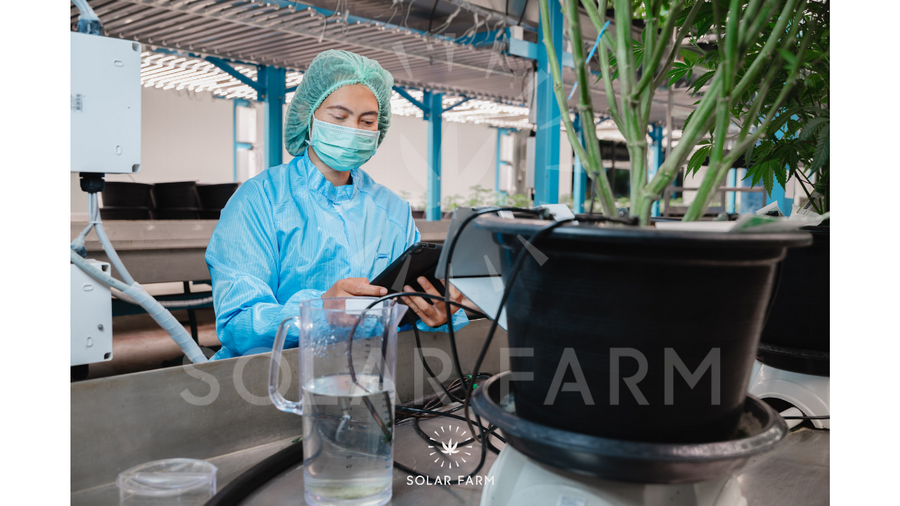Runoff Water Management in Cannabis Cultivation
Runoff water is a key indicator of root-zone health in controlled cannabis farming. By measuring what drains out after irrigation, growers see exactly how nutrients and salts behave in the substrate. This practice helps fine-tune feed strength, prevent buildup, and protect crop quality.
Every irrigation delivers water, nutrients, and oxygen to the root zone. Not all of it stays. A portion drains out as runoff, carrying dissolved salts and showing whether the feed is balanced. If runoff volume is too low, salts accumulate and stress plants. If too high, nutrients wash away and efficiency drops. Logging runoff protects consistency and supports GACP compliance.

Target ranges
Runoff volume: 10–20% of input is the common benchmark.
pH drift: Runoff pH should stay within ±0.2–0.3 of the feed solution. Larger shifts signal root-zone imbalance.
EC / PPM drift: Acceptable range is typically feed ±100–200 PPM (500 scale). Bigger differences mean either underfeeding or salt buildup.
Step-by-step practice
- Place a clean container under a representative plant
- Apply irrigation as scheduled
- Wait until dripping stops
- Measure feed and runoff volumes to calculate runoff percentage
- Record feed pH and PPM, then runoff pH and PPM
- Enter data with plant ID, date, room, and operator initials
How to use the data
- Low runoff (<5%): Increase irrigation volume or frequency
- High runoff (>25%): Reduce frequency or volume to save nutrients
- High runoff EC / PPM: Indicates salt accumulation—consider flushing or adjusting feed strength
- Low runoff EC / PPM: May point to underfeeding or nutrient lockout
At Solar Farm, runoff testing is part of daily climate and fertigation checks. Staff collect data from each room, compare against targets, and adjust programs within hours. This ensures stable root-zone conditions and keeps flower output uniform for cannabis wholesale Thailand and cannabis wholesale Bangkok buyers.
